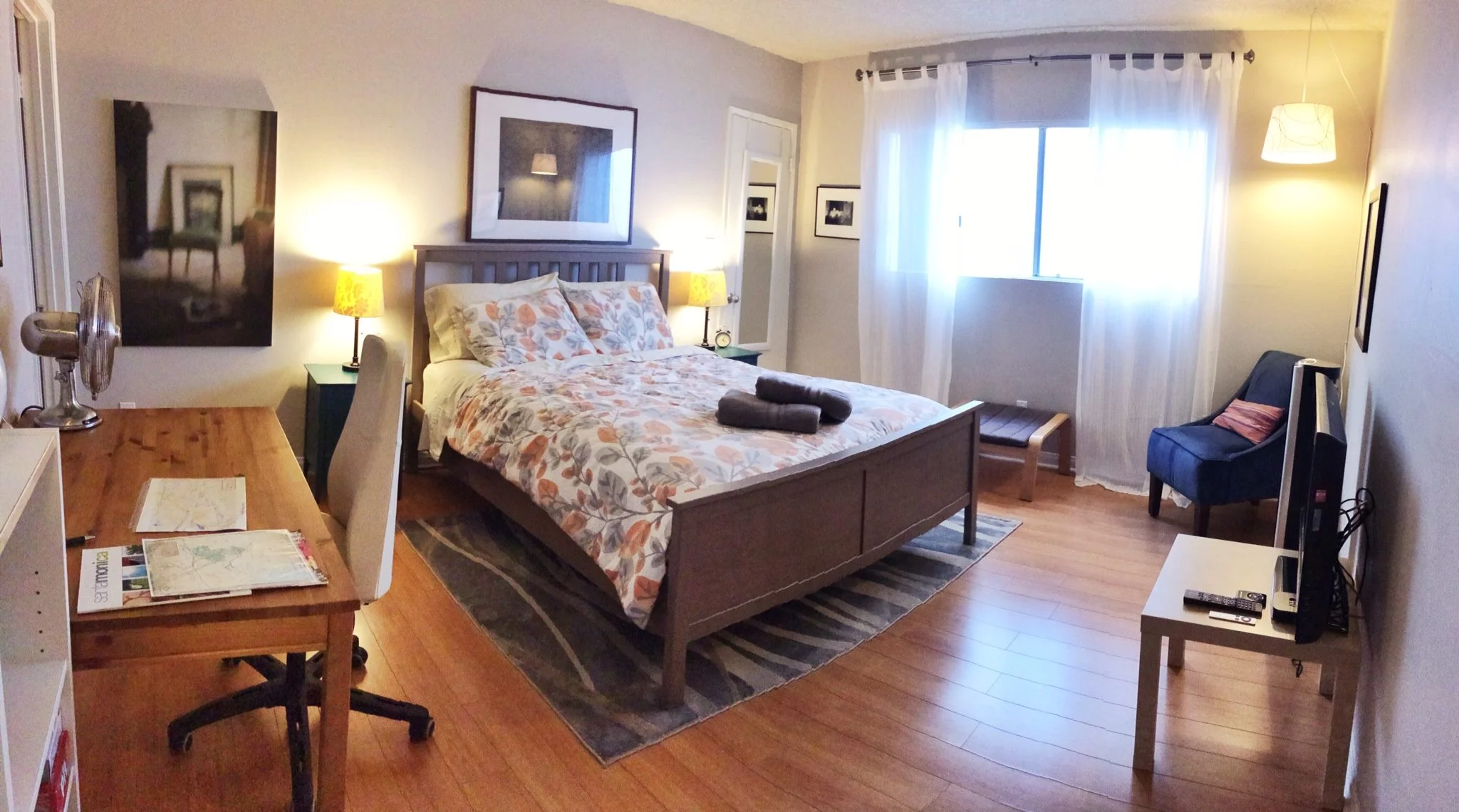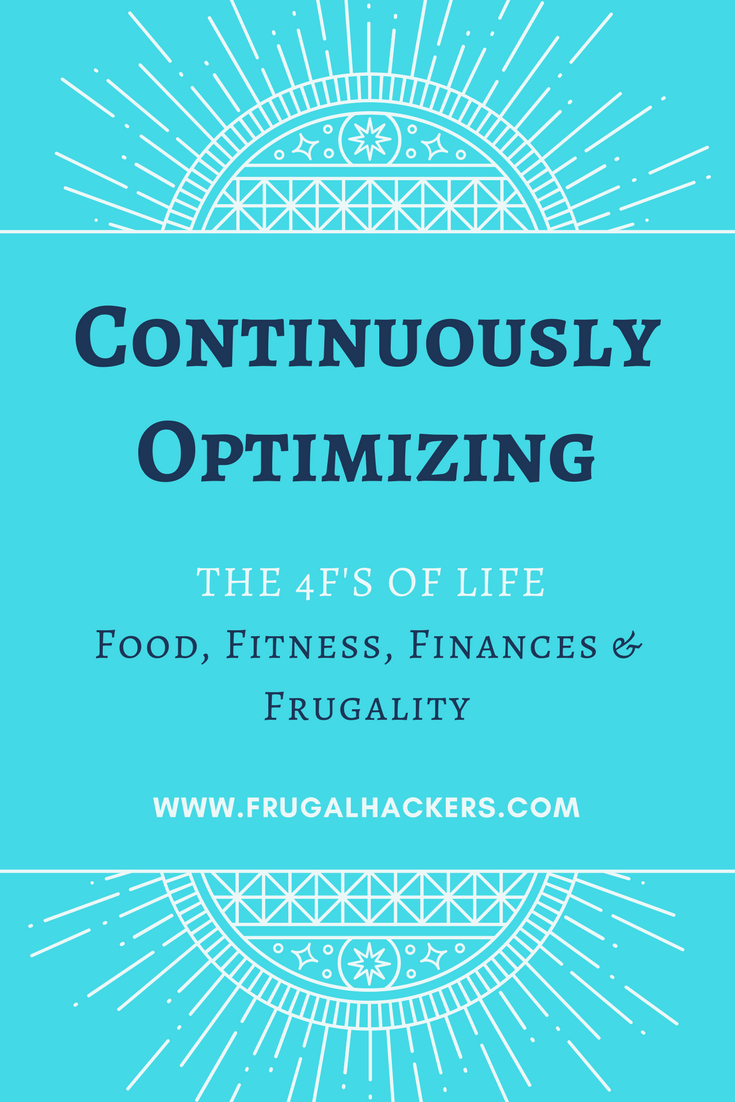This post is part of the Frugal Travel Series. At Frugal Hackers HQ, we apply many strategies to optimize our travel spend, which happens to be our top spending category in the "discretionary spending" category. Follow along to see how we maximize our enjoyment of vacation days given the constraints on time and money.
In Part 1 of the Frugal Travel Series, I shared the importance of taking time to choose your ideal vacation destination. What's next? If you start looking up vacation packages for Europe, Hawaii, Mexico, Bali, or wherever your version of paradise is, get ready for a mini heart attack from the prices you'll see. I've seen Europe trips advertised for $10,000 USD per person for a two week trip. That's a LOT of money to be dropping on a vacation, especially if you're still paying down debt or saving up for financial independence or retirement.
My version of paradise in the Canadian Rockies
Mr. Frugal Hacker and I don't always go for the cheapest vacations possible, and some of you might contest that our travel spending is really not that frugal at all. However, money is only one of the constraints in our equation. We value our time off from work extremely highly. We are young, active adults with zero commitments at home (no kids, no pets). We want to take full advantage of our health and freedom to explore the world, enjoy new experiences and push ourselves outside our comfort zones. We think of travel as a tool for learning and personal development, and therefore it's an investment in ourselves.
If travel is an investment, we want every dollar we spend to give us the highest return on investment. Like any other investment, due diligence is the first step. It's really easy to spend tens of thousands of dollars on vacations. If you come back to find that you've been scammed with tourist pricing, it's nothing short of horrifying.
Mrs. Frugal Hacker's Pro-tip - Do Your Homework
Step 1 - Travel Research
I always start with my motivations for wanting to travel to some place. What is it that draws me? Beautiful old cities? Natural landscapes? Hiking and cycling? Beaches? Based on these primary themes, I start looking up travel blogs, trip advisor lists, tour packages and their daily itineraries, things to see, things to try, things to do.
I also look up average temperatures throughout the year, figure out the high, low and shoulder seasons for travel, what side of the road they drive on, the local spoken language, public transit infrastructure, walkability of the cities, seasonal road or activity closures, need for camping or hiking permits etc. This is a really important step that sometimes takes weeks. I love reading about new places, so I really take my time with this step. I absorb as much information as I can, taking plenty of notes.
Another great resource for trip research - friends and coworkers who have travelled there! Look up photos from their trip on Facebook/Instagram, ask friends and family that live around there for local tips, ask other travelers for their itineraries and any gotchas they learned from their trip.
Step 2 - Make a budget
Now that you have a sense of what to do and what to see when you're on trip, you can start looking up the costs of the major spend categories for the vacation. Here's a template for a simple travel budget that you can start with. This is the budget I put together for our recent trip to the Canadian Rockies - Banff and Jasper national parks.
The major spend categories that you should start looking up are flights, accommodation, car rental, gas, local public transportation, food, and entrance and activity fees. Depending on where you're going, you should also consider looking up prices for permits, tour guides etc.
At this point, I don't try to optimize for the cheapest possible flights, hotels etc. The goal is to get a really solid idea of what you can expect to spend on trip before you actually pay a single dollar. I do think about camping vs. hotel accommodation (choice was obvious for Banff & Jasper since hotels were upwards of $300/night).
Budgeting for food is trickier because prices are not consistent across different places. We usually don't spend a whole lot on food while traveling. We eat anything vegetarian, and prefer light meals to save our energy for full days of walking, hiking, cycling etc. I budgeted $40 USD per day for both of us for this particular trip. I used a rough guideline of $10 for breakfast (TIM HORTONS, ANYBODY??), $15 for lunch and $15 for dinner. Yep, we eat a lot of Subway and Dominos.
Step 3 - Write down a high level trip plan
Once you have your budget in place, it's time to put together a high level plan. I'd love the luxury of slow travel where I can show up somewhere with absolutely no agenda. However, when time and money are both tight resource constraints, I'm terrified of spending a whole day on the trip chilling in the hotel room with nothing to do.
I don't plan out every hour of every day, but based on our pre-trip research, I identify the main highlights for each day we're on trip. This way, we have something to look forward to and keep us disciplined to wake up at a decent time and get exploring. For Banff and Jasper, this is what my high level plan looked like.
Once I have the high level plan and the budget, the next step is to share these numbers and details with Mr. Frugal Hacker. He has a ton of travel experience and is great at finding loopholes in the plan and asking the tough value-for-money questions. We start booking flights and accommodation only when we're both 100% on board with the trip. If we find a cheap deal on flights sooner, we book it anyway since we always have 24 hours to cancel without penalty.
Ugh, where's the fun in this?
Okay, if you've read all the way through here, you're probably thinking I just ruined all the fun of travel and vacationing with all this boring and gory detail. So, why does this matter - why plan anyway? The easy answer is that upfront planning saves money. Lots of it. If you can get the same experience for $50 instead of $500 with some planning in advance, why wouldn't you?! I'd rather invest the remaining $450 into our Wealthfront account.
Here are some examples of crazy savings we've got from trip planning over the years:
- Saved ~$2,000 USD in Iceland by planning and booking everything ourselves over a fully packaged self-drive tour around the country.
- An all-inclusive private tour in Bali was quoted $2,000 USD higher than what we spent by planning and booking the whole trip all by ourselves.
- We saved $400 USD by booking inter-island ferry tickets through a travel agent instead of the main ferry ticketing site in New Zealand. Pretty lucrative 15 minutes of Googling!
- One more goodie in New Zealand - New Year's eve hotels in Queenstown were $400 a night. We were there for two nights, and because we researched this in advance, we ended up tent camping in the city for a paltry ~$35/night. This alone saved us a good $730 on this trip.
There's definitely much more to add to that list (share your thoughts in the comments below), but the point is - a few hours at home can save you hundreds, sometimes thousands, of dollars on trip. Next in this series, I'll share our favorite hacks for flight tickets.









